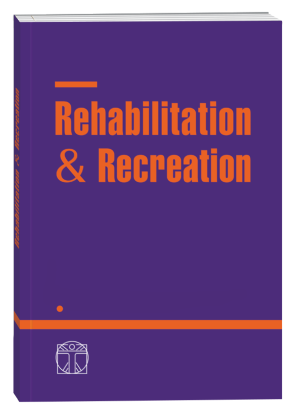INFLUENCE OF PNEUMOPERITONEUM DURING LAPAROSCOPIC SLEEVE RESECTION OF THE STOMACH ON THE HEMOCOAGULATION SYSTEM IN PATIENTS WITH MORBID OBESITY
DOI:
https://doi.org/10.32782/2522-1795.2024.18.4.7Keywords:
Bariatrics, gastric sleeve resection, laparoscopy, carboxyperitoneum, VTE, thromboelastographyAbstract
Introduction. Obesity is an independent risk factor for venous thromboembolism (VTE) in men and women. Despite the fact that the risk of postoperative VTE is very high in obese patients, embolic episodes are less frequent in laparoscopic procedures compared to open procedures. Reducing excess body weight in patients with morbid obesity through bariatric surgery is becoming increasingly popular. Laparoscopic sleeve gastrectomy (SG) has proven to be the least traumatic of bariatric interventions, as it is performed as a one-stage procedure. The category of obese patients (BMI ≥ 30), including patients with morbid obesity (BMI ≥ 40), is poorly represented in the aspect of adequate pressure of the carboxyperitoneum during laparoscopic bariatric interventions in terms of the development of VTE as a perioperative complication. Recently, the method of thromboelastography has been increasingly used for objectification. Goals – to compare the NPTEG data obtained in intraoperative conditions from laparoscopic sleeve resection of the stomach patients with different levels of pneumoperitoneum pressure. Materials and methods. The hemostasis system was studied in 50 patients aged 25–60 years with a BMI > 35 kg/m2 who were treated for morbid obesity by sleeve gastrectomy. All patients were divided into 2 groups depending on the pressure of the carboxyperitoneum. Group 1 (n = 33) – underwent surgery with standard preset pressure of the pneumoperitoneum (12–15 mm Hg); Group 2 (n = 17) underwent surgery with pneumoperitoneum pressure values higher than standard (≥16 mmHg) due to visualization problems. The average duration of surgical intervention was 60–80 minutes. The duration of pneumoperitoneum was 45–60 minutes. The study of the hemostasis system was carried out with the help of low-frequency piezoelectric thromboelastography (LPTEH), immediately after hospitalization and for 30 minutes surgical procedure. The results. In both groups of morbidly obese patients, with BMI ≥ 35 kg/m2, who underwent SG, before surgery: ICC was increased by 12.62%, ICD was increased by more than 22.68%, MA was increased by 18.63%, IRCL – 31.17% higher than normal. In the patients of the 1st group for 30 minutes bariatrics, according to NPTEG data: ICC increased by 23.57%, compared to the norm; parameters of coagulation and fibrinolysis have a reliable upward trend, and an increase in fibrinolysis activity is observed. In the patients of the 2nd group, at the same time, the ICC increased by 38.71%, the ICD increased by 69.03%, the MA increased by 98.93% compared to the norm, and the IRCL was increased by 118.73% higher than norm. Conclusions. The higher pressure of the pneumoperitoneum significantly affects the data of NPTEG in comparison with the standard in intraoperative conditions; this may increase the intra- and postoperative risk of VTE.
References
1. Buchwald H., Avidor Y., Braunwald E., et al. (2004). Bariatric Surgery: A Systematic Review and Meta-analysis. JAMA. 292(14): 1724–1737. doi: 10.1001/jama.292.14.1724.
2. David A. Froehling, Paul R. Daniels,Karen F. Mauck, Maria L. Collazo-Clavell, Aneel A. Ashrani, Michael G. Sarr, Tanya M. Petterson, Kent R. Bailey (2014). Incidence of Venous Thromboembolism After Bariatric Surgery: A Population-Based Cohort Study. NIH Public Access. Obes Surg. 14:1–5.
3. Faber D.R., de Groot P.G., Visseren F.L. (2009). Role of adipose tissue in haemostasis, coagulation and fibrinolysis. Obes Rev. 10:554–563.
4. Flum D.R., Belle S.H., King W.C., Wahed A.S., Berk P., Chapman W., et al. (2009). Longitudinal Assessment of Bariatric Surgery (LABS) Consortium. Perioperative safety in the longitudinal assessment of bariatric surgery. N Engl J Med. 361(5):445–54. [PubMed: 19641201].
5. Görkem Özgen, Toygar Toydemir, Mehmet Ali Yerdel. (2023). Low-Pressure Pneumoperitoneum During Laparoscopic Sleeve Gastrectomy: A Safety and Feasibility Analysis. Obes Surg. 33:1984–1988.
6. Guldogan C.E., Ozozan O.V., Ozmen M.M. (2020). Sleeve gastrectomy and its modifications. Ann Laparosc Endosc Surg. 5:27.
7. Lancaster R.T., Hutter M.M. (2008). Bands and bypasses: 30-day morbidity and mortality of bariatric surgical procedures as assessed by prospective, multi-center, risk-adjusted ACSNSQIP data. Surg Endosc. 22(12):2554–63. [PubMed: 18806945].
8. Melinek J., Livingston E, Cortina G, Fishbein MC. (2002). Autopsy findings following gastric bypass surgery for morbid obesity. Arch Pathol Lab Med. 126(9):1091–5.
9. Napoleone E., Dis A., Amore C. (2007). Leptin induces tissue factor expression in human peripheral blood mononuclear cells: a possible link between obesity and cardiovascular risk? J Thromb Haemost. 5:1462–1468.
10. Nguyen N.T., Wolfe B.M. (2005). The physiological effects of pneumoperitoneum in the morbidly obese. Ann Surg. 241:219–26.
11. Okunogbe et al. (2022). Economic Impacts of Overweight and Obesity. 2nd edition with Estimates for 161 countries. World Obesity Federation.
12. Tarabrin O., Shcherbakov S., Gavrychenko D., Saleh O., Lyoshenko I., Kushnir O. (2013). Can we use the low-frequency piezoelectric tromboelastography for diagnosis coagulation disorders? European Journal of Anaesthesiology. 30:92.
13. Vorotyntsev S.I., Tarabrin O.A. (2011). Vliyaniye epidural’noy analgezii na gemostaticheskiy potentsial posle abdominal’nykh operatsiy u patsiyentov s ozhireniyem. Clinical anesthesia and intensive therapy. 1(11):5–13.
14. Winegar D.A., Sherif B., Pate V., DeMaria E.J. (2011). Venous thromboembolism after bariatric surgery performed by Bariatric Surgery Center of Excellence Participants: analysis of the Bariatric Outcomes Longitudinal Database. Surg Obes Relat Dis. 7(2):181–8. [PubMed: 21421182].
15. World health statistics. 2012. 34–37.
16. Zachari Eleni, Sioka Eleni. (2012). Venous Thromboembolism in Bariatric Surgery. Dr. Ufuk Çobanoğlu (Ed.). ISBN: 978-953-51-0233-5.
Downloads
Published
How to Cite
Issue
Section
License

This work is licensed under a Creative Commons Attribution-NonCommercial-NoDerivatives 4.0 International License.












